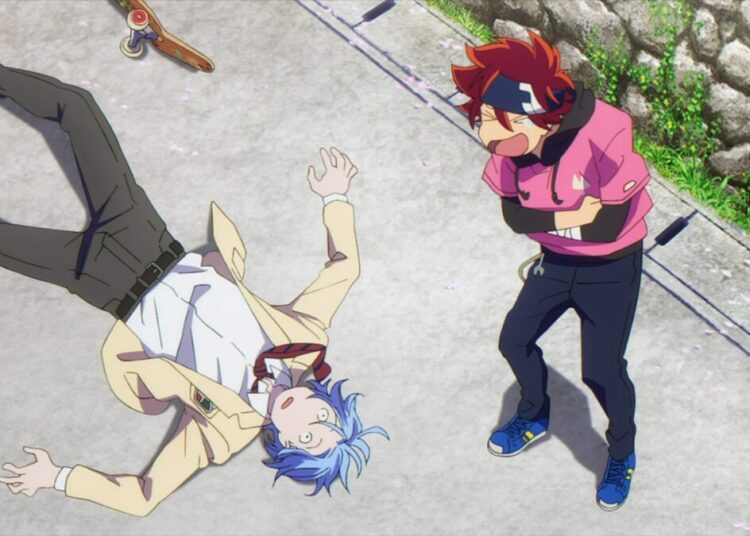Chances are, those not too familiar with the long-running Gundam franchise may have heard of the peculiar world of video game titles that have never made it across the Pacific. Just as significant, if not even more so, are the various unsung entries that never left Japan at all, notably the likes of Crossbone Gundam (1994-97) and, until the 2010s, Turn A Gundam (1999-2000). Chances are, you may even have come across references to some of these in more recent works, at times eliciting confusion.
The fan-made opening sequence for Mobile Suit Crossbone Gundam, one of the more popular and notorious UC entries that haven’t seen an English release. Circa 2014. (Source: YouTube)
With this guide, hopefully, you’d be able to get a taste of the myriad gems, particularly manga, to be found from the depths of Gundam lore. And while not all of them are likely to be found localized in Western shores anytime soon, they’re still worth checking out if you’re willing to take the plunge.
Mobile Suit Gundam: The Plot to Assassinate Gihren (2007-10)

A manga series by Ark Performance (of Arpeggio of Blue Steel fame), Mobile Suit Gundam: The Plot to Assassinate Gihren is a case of an interesting genre shift. Rather than focusing on the horrors of war or yet another battlefield in the Universal Century, this one approaches the infamous One Year War in the vein of political thriller and historical allegory. It’s better than it sounds.
The story follows Zeon detective Leopold “Leo” Fieseler as he investigates a series of attacks in the Principality’s homeland of Side 3, towards the final months of UC 0079. What starts out as yet another case to solve turns into a race against time, as a secretive group dubbed “Valkyrie” schemes to kill Gihren Zabi and broker a peace with the Earth Federation. As Leo finds himself caught in the middle of the conspiracy, he finds that neither his suspects nor allies are what they claim to be.
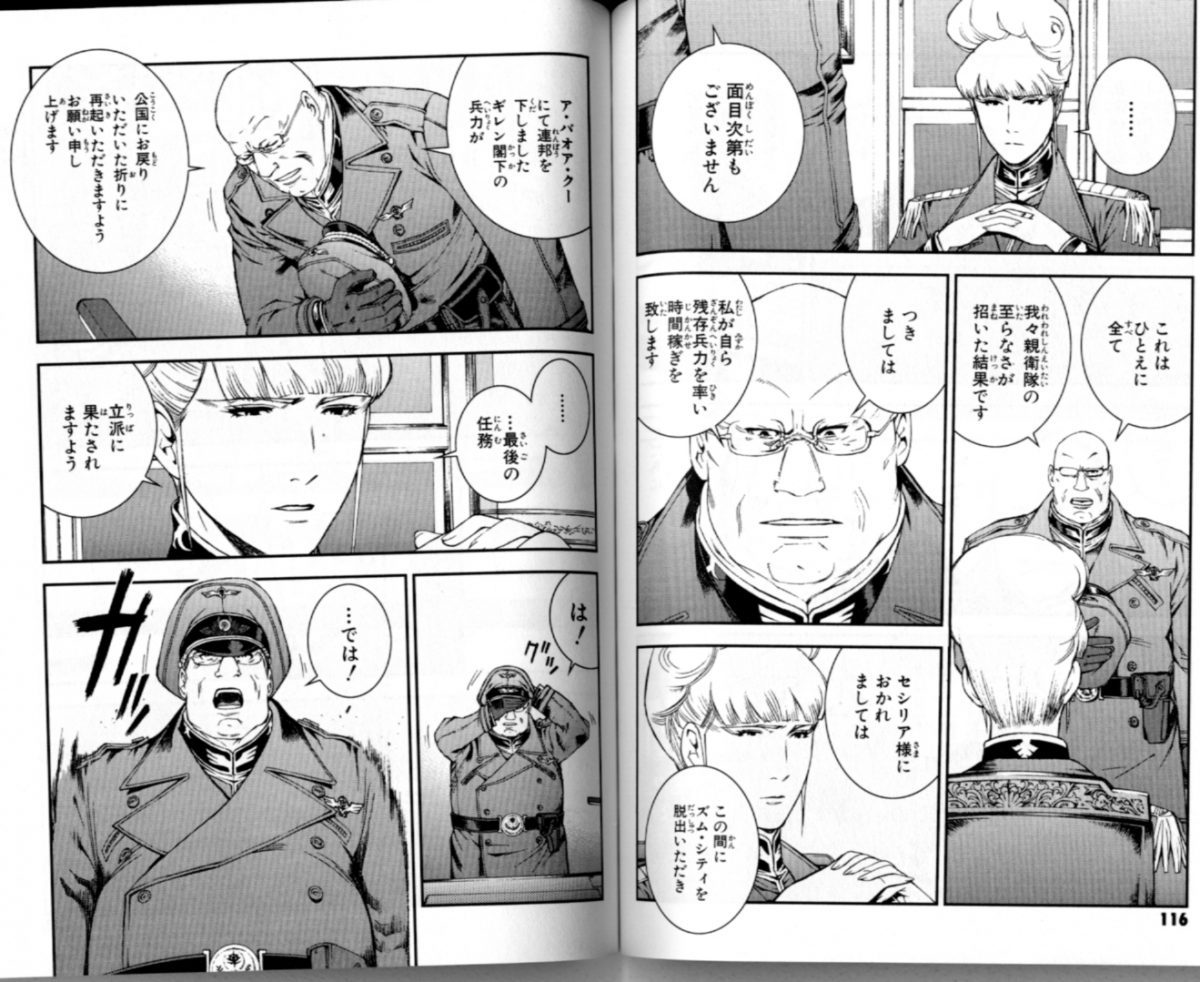
It’s not surprising that the manga takes considerable inspiration from both Imperial Japan and Nazi Germany, with the titular plot being lifted from the failed yet real “20 July plot” to kill Hitler. In addition, to an even greater degree than 0080: War in the Pocket, Newtypes are hardly present, while Mobile Suit action is almost nonexistent until the climax; Gihren himself doesn’t show up, though his presence is felt all throughout.
To be sure, the focus on intrigue and relative lack of overt action might not be your cup of tea. Still, no only does this manage to shed light on the hidden power struggles that often lurked in the background of the TV shows, but it also does so rather plausibly. That the mangakas do a solid job in showing why people root for Zeon-aligned characters while still acknowledging the horrific crimes committed probably helps, as well.
Mobile Suit Zeta Gundam: Day After Tomorrow – From Kai Shiden’s Report (2005-07)
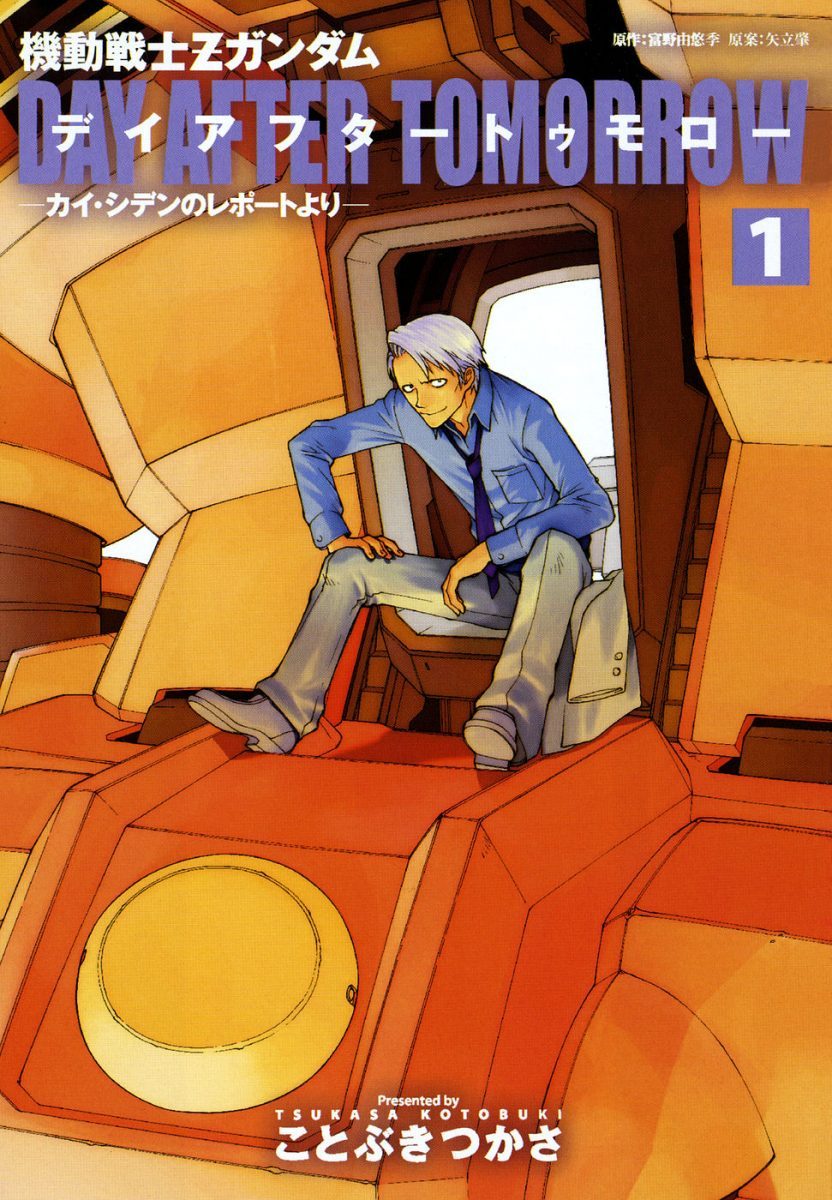
As one of the original White Base supporting characters in the 1979 show, Kai Shiden has popped up more than once in subsequent entries in the franchise. Over the years, he’s gained a reputation as the Gundam equivalent of both an investigative reporter and James Bond, even if those exploits are never quite fully revealed on-screen. Tsukasa Kotobuki’s Mobile Suit Zeta Gundam: Day After Tomorrow – From Kai Shiden’s Report, however, seeks to rectify that.
Set in the UC 0080s, the manga follows Kai’s personal quest for the truth, putting his journalistic and most of his military skills to the test. Through both coincidence and circumstance, he crosses paths with old friends, meets Zeon veterans finding their way through defeat, and thwarting the Titans’ nefarious schemes in one piece, without using a Mobile Suit. All the while, he remains haunted by nightmares from the One Year War that refuse to let him be.
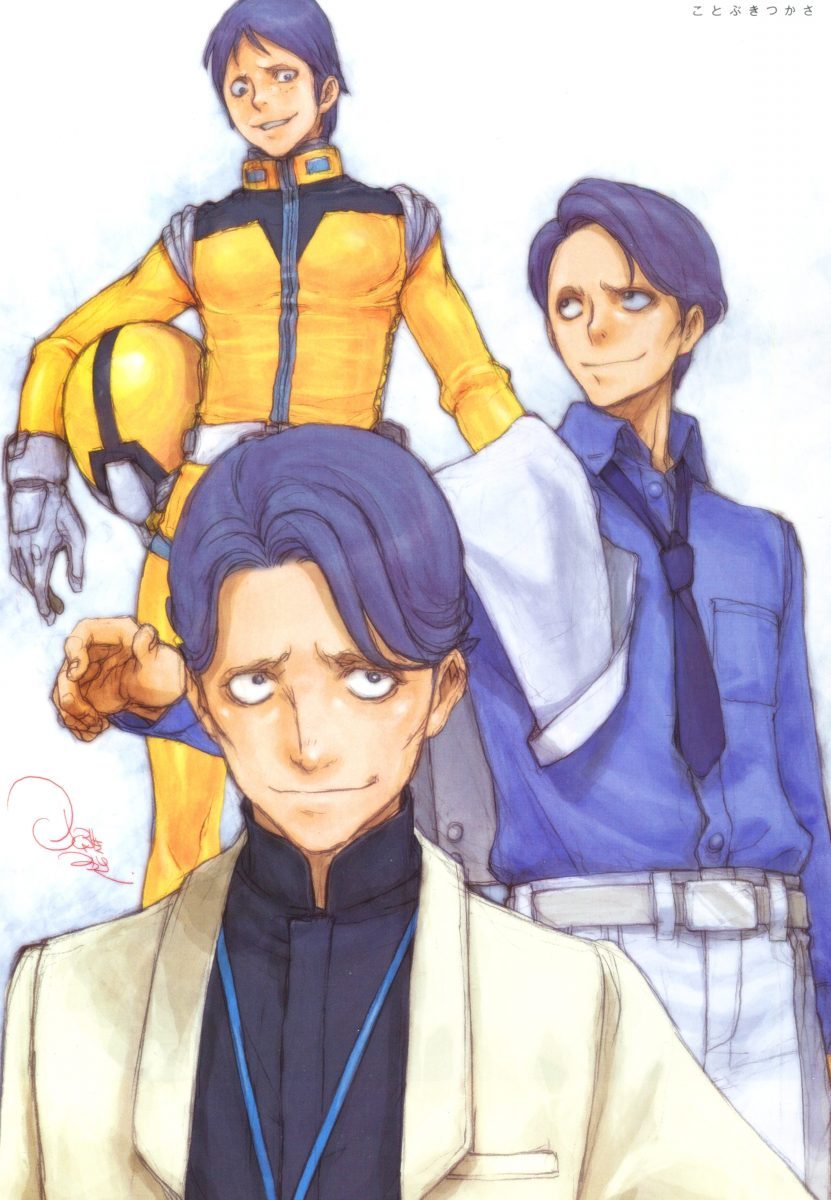
At points, it could superficially seem like a retread of the events of Zeta. A number of chapters, such as the Dakar speech and Beltorchika Irma’s appearance, even overlap with specific episodes from the series. Yet whether it’s Kai chatting with Sayla Mass, or riffing on Char Aznable’s Quattro persona, Kai’s antics provide a deeper glimpse into the lore that you don’t always see. Even beyond his snarky retorts and inner thoughts almost mirroring fan comments on the Universal Century, which also makes this work interesting is how it makes the character relatable and sympathetic despite appearances. That his PTSD, especially over failing to save a love interest, is believably portrayed helps add a sense of realism not seen with Amuro Ray.
It’s popular enough that a sequel, Day After Tomorrow – Kai Shiden’s Memory, was published from 2009-12, fast-forwarding to the same era as Hathaway’s Flash. Coincidentally, Kotobuki’s efforts here would catch the attention of Yoshikazu Yasuhiko, leading to his own involvement with Mobile Suit Gundam: The Origin. While neither entry is currently available in English, they’re still worth checking out, even if just for curiosity’s sake.
Gundam Reconguista in G: From the Past to the Future (2015)
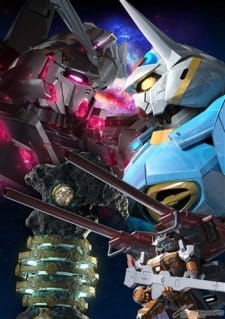
Also known as G-Reco, Gundam Reconguista in G marked Yoshiyuki Tomino’s return to the franchise. The 2014-15 series, however, was met with a mixed reception, being criticized for being confusing, if not jumbled. The From the Past to the Future short, directed by Shigeto Kawata and penned by Nobuhiko Genma, sought to help address that.
Set sometime towards the later parts of the show, the nine-minute OVA follows protagonists Bellri Zenam (Mark Ishii) and Aida Surugan (Yu Shimamura) as they fend off a Capital Army force led by the villainous Mask. What starts out as a regular Mobile Suit battle takes a turn for the worst as the enemy sets out with a weapon based on the ancient Universal Century: the CAMS-RX0 G-Phenex.
The online copy of the short film, on top of making it accessible for international audiences, also showcases how smooth the animation can be. Circa 2015. (Source: YouTube)
While it might be easy to dismiss the short film as a glorified commercial or PR fodder, being originally featured at Gundam Front Tokyo’s Wall-G Theater, it’s by no means a cheap cash-grab. On top of the crisp blend of CGI and 2D animation. It does a surprising job in spotlighting some of the aspects of the anime that were perhaps overlooked at the time. Whether it’s highlighting Aida’s credentials as an expert pilot, the sheer flexibility of Bellri’s Gundam G-Self, or the connection between the futuristic Regild Century and the UC works, it could make you want to give the series another look.
Alas, the only way for the moment to see From the Past to the Future outside of going to Odaiba is through YouTube. Yet alongside Tomino’s planned compilation films aiming to remedy the TV series’ shortcomings, it’s nonetheless an interesting watch.
These are only a taste of what those across the Pacific are missing out on. Whether or not if you’re not a Gundam fan, however, there’s certainly bound to be something worth your while.


